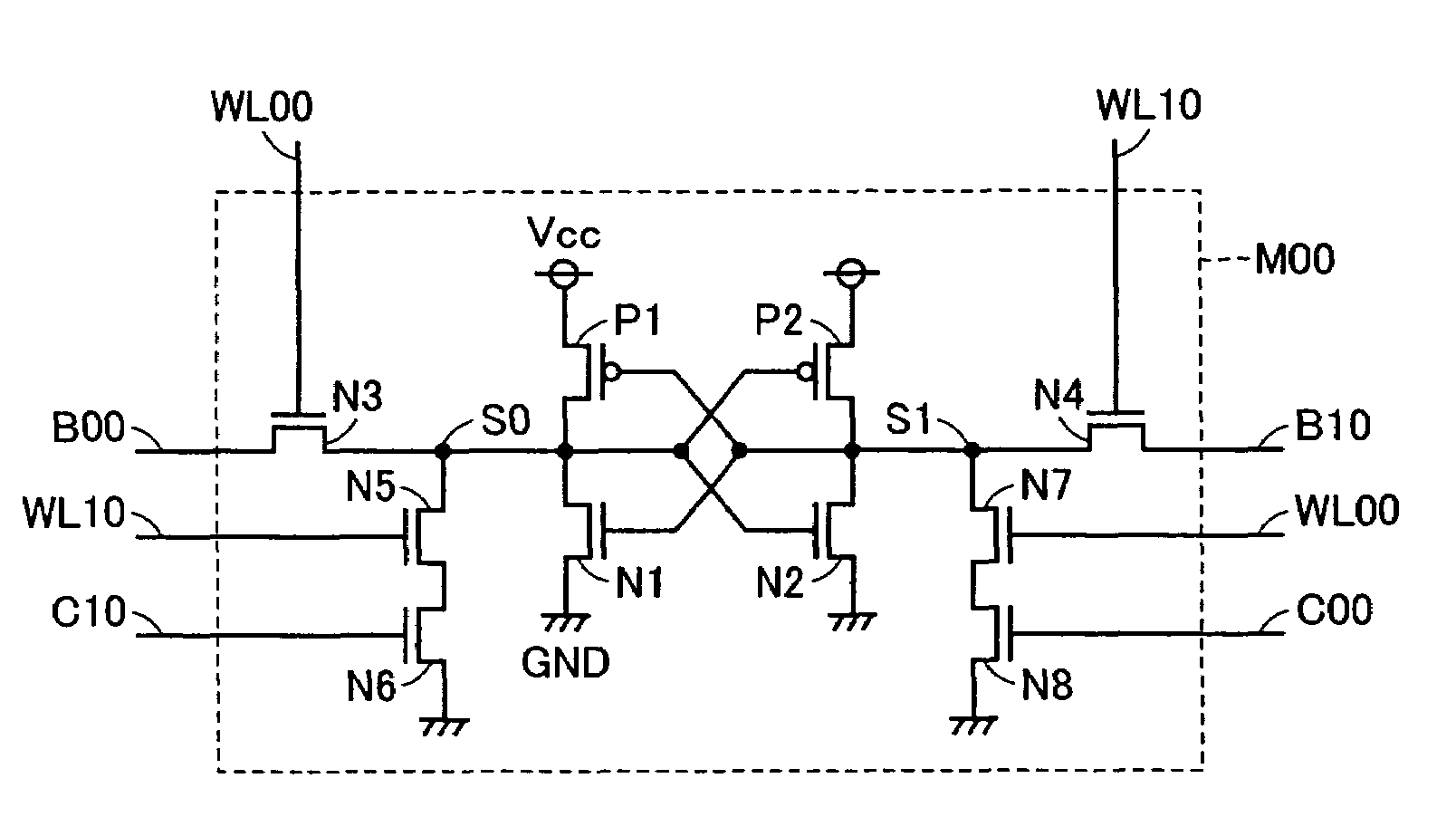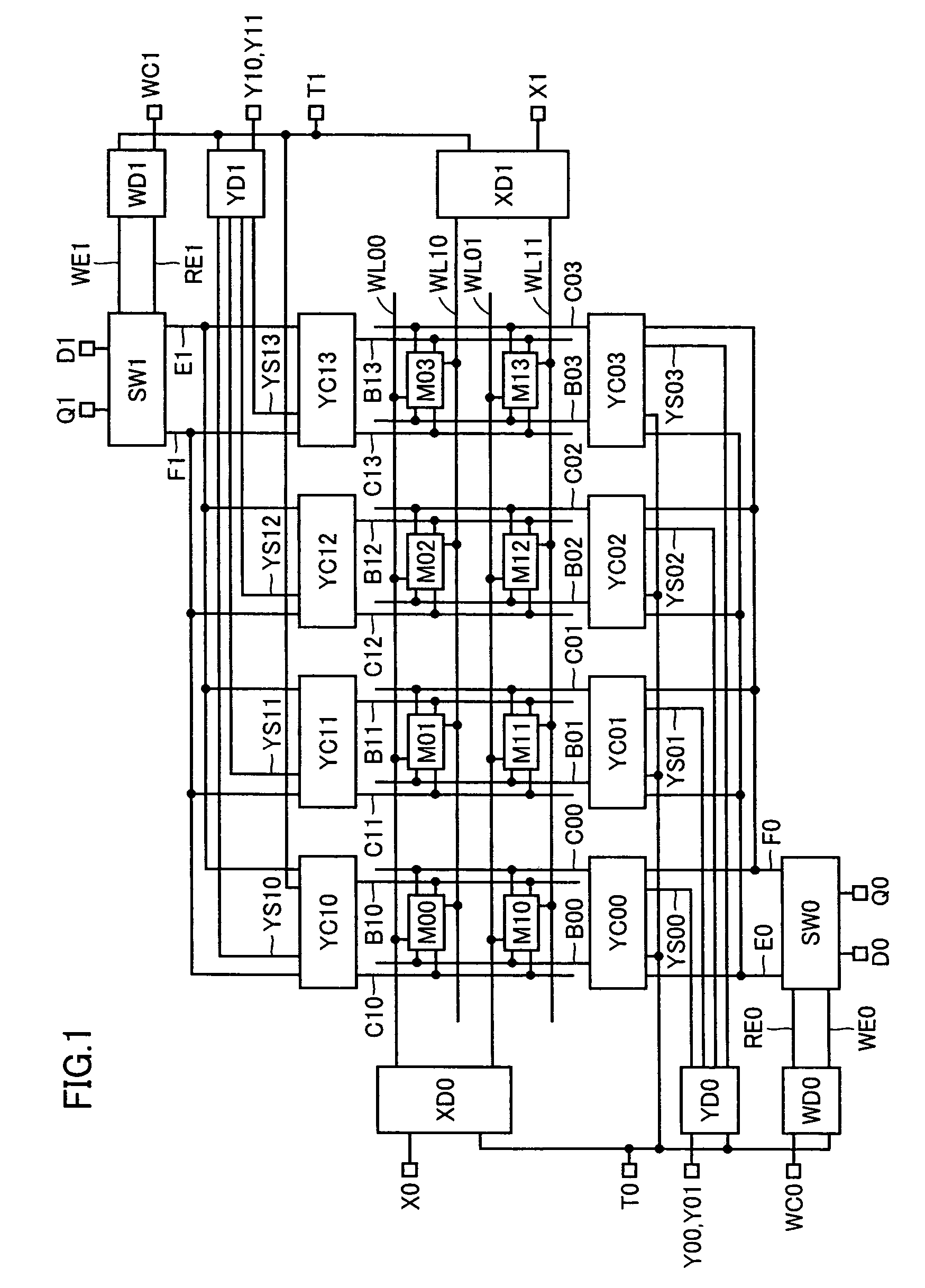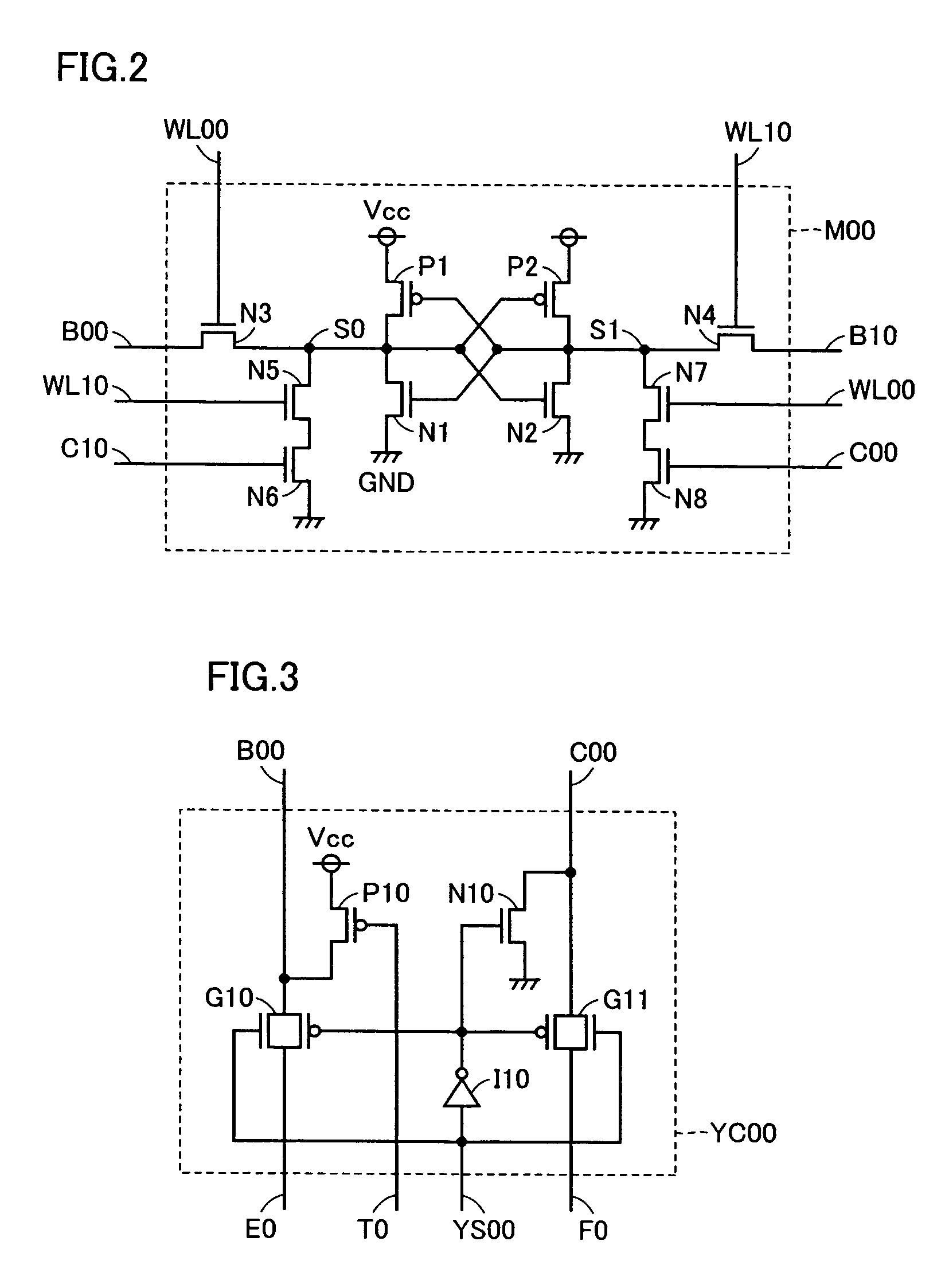Multiport semiconductor memory device capable of sufficiently steadily holding data and providing a sufficient write margin
a memory device and multi-port technology, applied in the direction of information storage, static storage, digital storage, etc., can solve the problems of data being destroyed in the memory cell, difficult to write data, and difficult to ensure that data is held steady, so as to reduce current driving force ratio, sufficient write margin, and data holding significantly steady
- Summary
- Abstract
- Description
- Claims
- Application Information
AI Technical Summary
Benefits of technology
Problems solved by technology
Method used
Image
Examples
first embodiment
[0045
[0046]FIG. 1 is a schematic block diagram showing a configuration of a 2-port static semiconductor memory device of the present invention in a first embodiment.
[0047]While FIG. 1 shows a configuration of a 2-port SRAM having memory cells arranged in a matrix of two rows and four columns to simplify the description, the present invention is not limited to this configuration and is applicable to any multiport SRAMs having memory cells arranged in a matrix of more rows and columns.
[0048]With reference to FIG. 1, the 2-port SRAM includes: a memory array having memory cells M00–M03, M10–M13 arranged in two rows and four columns; word lines WL00, WL10 associated with the row of memory cells M00–M03; word lines WL01, WL11 associated with the row of memory cells M10–M13; bit lines B00, B10 and sub bit lines C00, C10 shared by memory cells M00, M10; bit lines B01, B11 and sub bit lines C01, C11 shared by memory cells M01, M11; bit lines B02, B12 and sub bit lines C02, C12 shared by memo...
second embodiment
[0172
[0173]FIG. 10 is a schematic block diagram extracting and showing a configuration of a memory array of the present 2-port SRAM in a second embodiment.
[0174]With reference to the figure, the 2-port SRAM includes memory cells R[0]–R[k] arranged in k+1 rows and one column, word lines WL00, WL10 . . . WL0k, WL1k correspondingly associated with the rows of memory cells, bit lines B0 and B1 shared by memory cells R[0]–R[k], sub bit lines C0 and C1, and common signal lines Q0 and Q1 shared by memory cells R[0]–R[k], wherein k represents a natural number. Note that while in the present embodiment a single column of memory cells is used by way of example, a plurality of columns of memory cells may also be applicable.
[0175]Between common signal line Q0 and ground potential GND an n MOS transistor N41 is connected. Transistor N41 has a gate potential controlled via sub bit line C0.
[0176]Between common signal line Q1 and ground potential GND an n MOS transistor N40 is connected. Transistor...
third embodiment
[0196
[0197]FIG. 13 is a circuit diagram showing a configuration of the present multiport SRAM memory cell in a third embodiment.
[0198]With reference to the figure, the multiport SRAM memory cell, having 2n ports, wherein n is a natural number, includes a latch circuit formed of p and n MOS transistors P1 and N1 connected between power supply potential Vcc and ground potential GND in series and p and n MOS transistors P2 and N2 connected between power supply potential Vcc and ground potential GND in series.
[0199]MOS transistors P1, N1 have their respective gates both connected to a node S1 connecting MOS transistors P2 and N2. (Hereinafter this node will also be referred to as storage node S1.) MOS transistors P2, N2 have their respective gates both connected to a node connecting MOS transistors P1 and N1. (Hereinafter this node will also be referred to as a storage node S0.) In other words, p MOS transistors P1, P2 serve as load transistors and n MOS transistors N1, N2 serve as driv...
PUM
 Login to View More
Login to View More Abstract
Description
Claims
Application Information
 Login to View More
Login to View More - R&D
- Intellectual Property
- Life Sciences
- Materials
- Tech Scout
- Unparalleled Data Quality
- Higher Quality Content
- 60% Fewer Hallucinations
Browse by: Latest US Patents, China's latest patents, Technical Efficacy Thesaurus, Application Domain, Technology Topic, Popular Technical Reports.
© 2025 PatSnap. All rights reserved.Legal|Privacy policy|Modern Slavery Act Transparency Statement|Sitemap|About US| Contact US: help@patsnap.com



